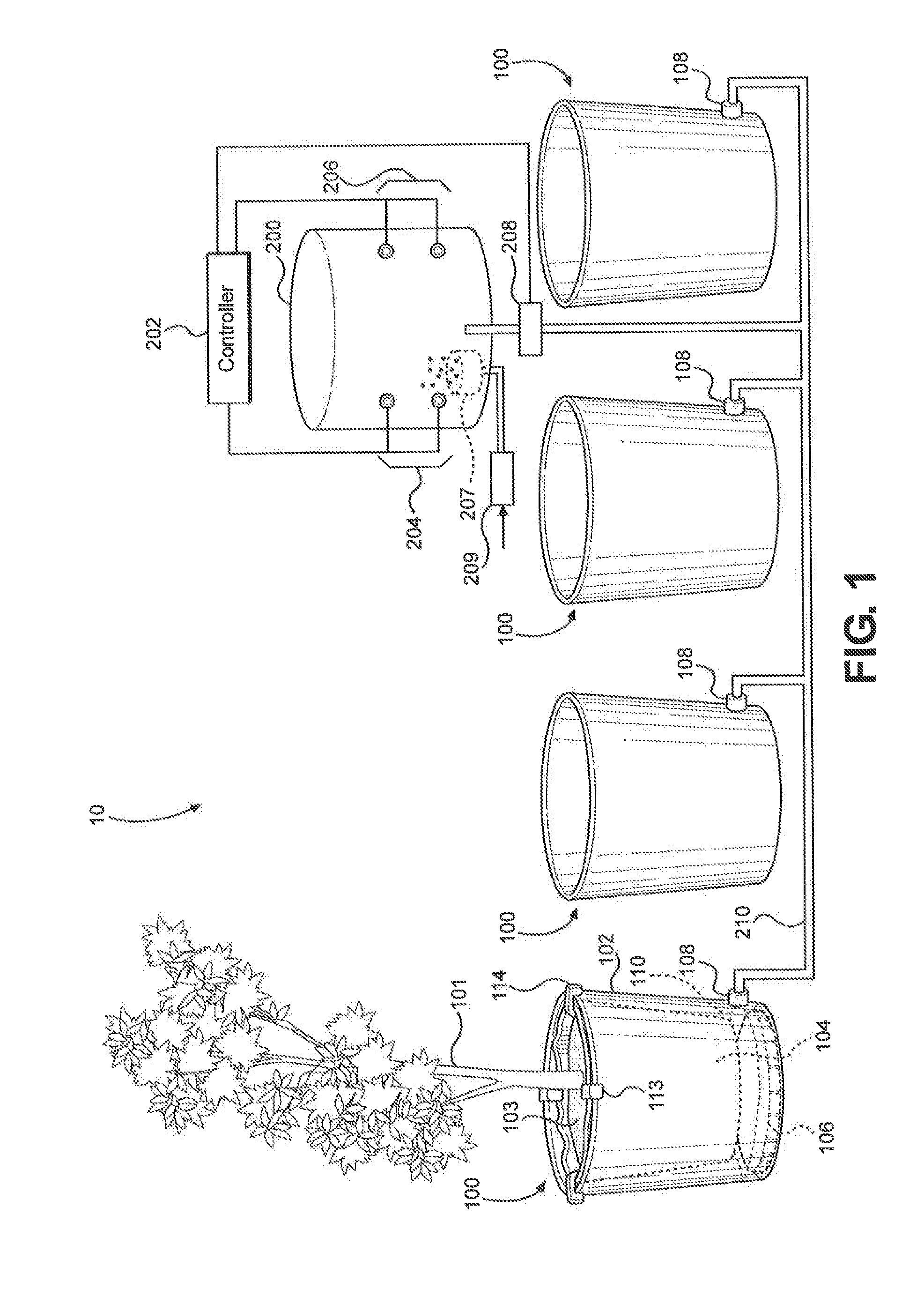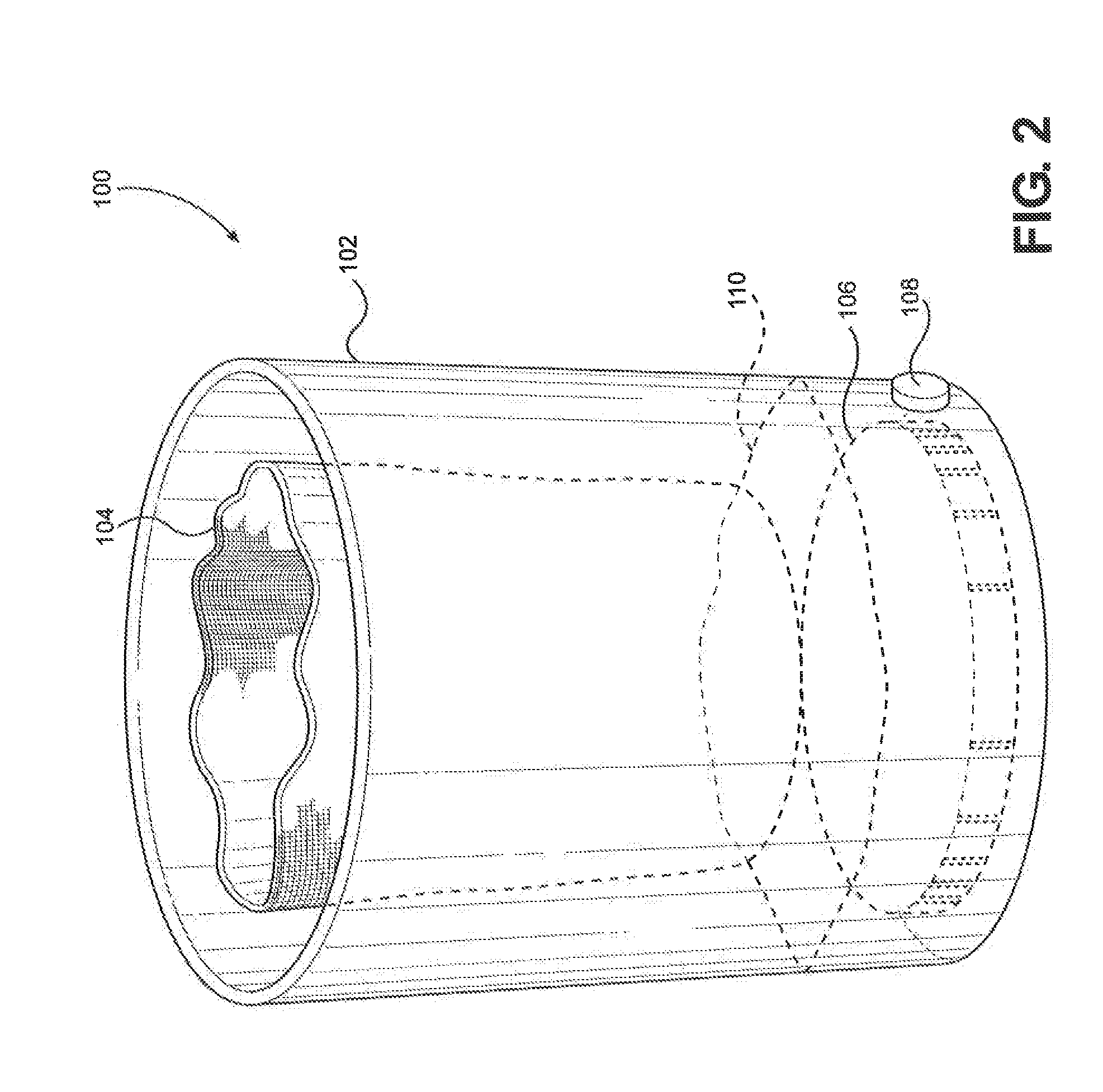Hydroponic growing system
a growing system and hydroponic technology, applied in the field of hydroponic growing systems, can solve the problems of suffocating the roots of plants, clogging of water lines, loss of mediums, etc., and achieve the effect of minimizing water resistance and minimizing the eroding of mediums
- Summary
- Abstract
- Description
- Claims
- Application Information
AI Technical Summary
Benefits of technology
Problems solved by technology
Method used
Image
Examples
Embodiment Construction
[0029]Referring initially to FIG. 1, a hydroponic growing system in the present invention is generally designated 10, and includes multiple plant reservoir containers 100 and a main reservoir 200 connected to the controller 202 is illustrated. The individual plant reservoir container 100 is connected to the main reservoir 200 and to the other plant reservoir containers 100 through the connection port 108 on each plant reservoir container 100 and the connection pipeline 210. The connection ports 108 are used both for the inlet and outlet of the fluid from the main reservoir 200 to the plant reservoir containers 100. According to predetermined intervals controlled by a float and timing mechanism set up by the controller 202, the “fill” switches 204 are activated through the pump 208 and thus, the plant reservoir containers 100 are flooded to a specific water level 110 to immerse the soft-sided fabric container 104 to supply water and other nutrients to the roots of the plant 101. Foll...
PUM
 Login to View More
Login to View More Abstract
Description
Claims
Application Information
 Login to View More
Login to View More - R&D
- Intellectual Property
- Life Sciences
- Materials
- Tech Scout
- Unparalleled Data Quality
- Higher Quality Content
- 60% Fewer Hallucinations
Browse by: Latest US Patents, China's latest patents, Technical Efficacy Thesaurus, Application Domain, Technology Topic, Popular Technical Reports.
© 2025 PatSnap. All rights reserved.Legal|Privacy policy|Modern Slavery Act Transparency Statement|Sitemap|About US| Contact US: help@patsnap.com



